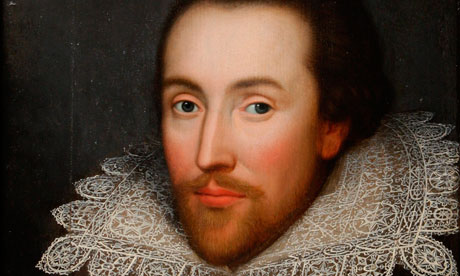This poem is one of Shakespeare’s procreation sonnets. The speaker makes an attempt to convince the young man to reproduce. He does this by invoking images of things that have been affected by the passage of time.
About the Poet:
Often called England’s National Poet, William Shakespeare is widely regarded as the greatest dramatist in the English language. Also known as the Bard of Avon, his works include approximately 38 plays, including collaborations, 154 sonnets, and 2 long narrative poems, and some other verses of uncertain ownership.
Sonnet 12- Setting
Sonnet 12 is a procreation sonnet in the ‘Fair Youth’ sequence. It deals with the effect that time has on several beautiful things in the natural world. These images are juxtaposed into the speaker’s appeal to the young man, namely, procreation to preserve his beauty.
Sonnet 12- Poetic Devices
Metaphors:
Line 1- ‘brave day sunk in hideous night’- refers to the setting of the sun.
Line 8- ‘Borne on the bier with a white and bristly beard’
Alliteration:
Line 1- ‘count the clock’
Line 3- ‘past prime’
Line 4- ‘sable… silver’d’
Line 7- ‘green….girdled’
Line 8- ‘borne…bier’
Line 10- ‘That thou’
Line 11- ‘Since sweets’
Line 14- ‘breed….brave’
Personification: Line 11- ‘time’s scythe’
Style- The sonnet consists of 3 quatrains and a couplet. It follows a rhyme scheme of abab cdcd efef gg.
Sonnet 12: Summary
Like sonnets 1 and 2, the speaker attempts to convince the young man to procreate in order to pass on his beauty to the next generation. In order to do this, the speaker invokes several elements from the natural world. He makes references to the day descending into the night, a ‘violet past prime,’ greying hair, trees without leaves, and the grass cut up and dried as hay. Using this series of images showing the effect of time on the natural world, the poet tries to justify his concern for the young man. He states that the young man will, one day, vanish into the ‘wastes of time.’ The only way for his beauty to escape the passage of time would be through his progeny.
Sonnet 12- Critical Analysis
Quatrain 1:
The speaker begins with a series of images to illustrate the effect of time. He begins with the image of time itself in the form of a clock. He then brings up images from the natural world. He mentions a sunset; a violet that is drooping; and white hair among once black curls. These images are natural and organic. Although they may appear unrelated, all of them emphasize the effect of time.
Quatrain 2:
In the second quatrain, the speaker invokes images from autumn. The trees shed their leaves in this season. These ‘lofty trees….barren of leaves’ once offered shade to herds but are now unable to do so. The grass, which was green all summer, has been cut up and arranged in sheaves of hay. A bier is a structure used to carry a corpse to the grave. The sheaves of hay remind the speaker of the corpse of an old man, with a ‘white and bristly beard’ being carried to the grave.
Quatrain 3:
After invoking these images of the effects of time, the speaker directly addresses the young man. He states that there is no question that the young man’s beauty will also face the effects of time. ‘Sweets and beauties’ refer to inner virtues and outer beauty, respectively, and both, as per the speaker, fade away with the passage of time.
Final couplet:
In the final couplet, the poet personifies time as the Grim Reaper (Death) holding a scythe. The speaker mentions that it is impossible to escape the scythe of time except through progeny.
Sonnet 12- Central Idea
The sonnet is about the transience of most things in the natural world. Beauty too is a transient feature, and without progeny, a person’s beauty and virtues will die with him.
Sonnet 12: Tone
In Sonnet 12, the poet’s tone is philosophical. In the first two quatrains, he invokes images from the natural world to illustrate the effects of time. In the third quatrain, the poet adopts a matter-of-fact tone about the young man’s mortality. The poem ends in a slightly hopeful tone.
This sonnet is written reasonably, which makes it easy to follow, especially if one is familiar with the earlier sonnets in the series. The poet creates a sense of poignancy through images like a sunset, a drooping violet, greying hair, trees bereft of leaves, and sheaves of hay. He uses these images to drive home the point that time affects everything. He ends by saying that the only way to cheat time is through procreation.
Some online learning platforms provide certifications, while others are designed to simply grow your skills in your personal and professional life. Including Masterclass and Coursera, here are our recommendations for the best online learning platforms you can sign up for today.
The 7 Best Online Learning Platforms of 2022
- Best Overall: Coursera
- Best for Niche Topics: Udemy
- Best for Creative Fields: Skillshare
- Best for Celebrity Lessons: MasterClass
- Best for STEM: EdX
- Best for Career Building: Udacity
- Best for Data Learning: Pluralsight












